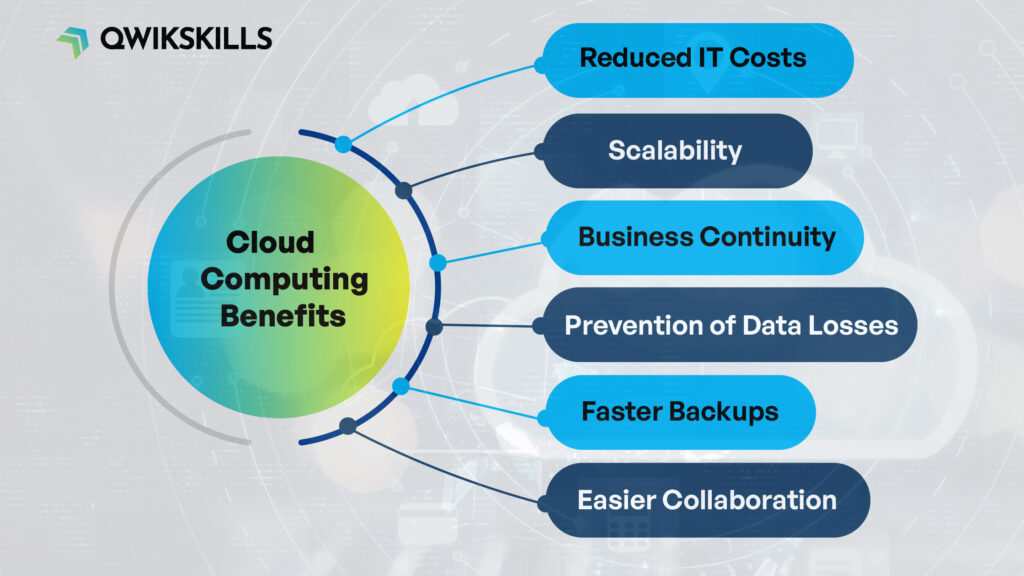Organizations may now take advantage of the newest technological advancements and increase productivity while cutting costs thanks to Cloud Computing, which has significantly revolutionized how organizations operate. The significance of cloud computing for businesses, the benefits it offers, the different types of services that are available, how to implement cloud computing, and any potential problems that businesses may have are all covered in this article.
What is Cloud Computing?
Cloud computing lets businesses use the internet to access computing services like software, storage, and processing power. Using the assets of cloud specialist organizations, who deal with the equipment and programming expected to run applications, they can try not to need to keep up with their IT frameworks.
The Benefits of Cloud Services
Cost savings are one of the main advantages of Cloud Certification. By utilizing cloud administrations, organizations can lessen their IT costs by staying away from the need to buy and keep up with their IT foundation. Additionally, businesses can quickly and easily scale their operations up or down thanks to the cloud’s increased flexibility and scalability.

Additionally, Cloud Computing offers a higher level of data safety and security. Businesses can ensure the safety of their data and recover it in the event of a disaster by storing it in the cloud. Businesses can share files and work on projects in real-time from anywhere thanks to the cloud, which also facilitates collaboration and accessibility.
Advantages of Cloud Computing for Businesses
Cost Savings: The need for businesses to invest in their IT infrastructure, reduces capital expenditure. Cloud computing is advantageous for businesses financially, as they don’t need to buy IT equipment and only pay for the resources they require, which can be easily increased or decreased depending on their needs.
Scalability: It is straightforward for businesses to adapt their processes according to the demand, without needing to buy extra hardware or software.
Security: cloud service providers are in charge of maintaining and safeguarding their infrastructure, businesses can benefit from their expertise and superior safety procedures.
Mobility: Employees can work from anywhere with an internet connection using cloud computing, making information sharing and collaboration simpler.
Types of Cloud Computing
Infrastructure as a Service (IaaS): IaaS gives organizations admittance to virtualized figuring assets, like servers and capacity, permitting them to make and deal with their framework in the cloud.
Platform as a Service (PaaS): PaaS gives organizations a stage for creating, testing, and conveying applications in the cloud, without dealing with the fundamental framework.
Software as a Service (SaaS): SaaS furnishes organizations with admittance to programming applications over the web, disposing of the requirement for organizations to introduce, arrange, and keep up with programming on their equipment.
 Steps to Implement in cloud computing
Steps to Implement in cloud computing
Identify business needs: Organizations need to evaluate their prerequisites and distinguish which applications and administrations would profit.
Choose a cloud service provider: Businesses need to select a cloud service provider that meets their requirements and provides the necessary services and support.
Migration to the cloud: Data and application configurations must be moved to the cloud by businesses, which may necessitate program modifications.
Post-migration management: Once the migration is complete, businesses need to manage their cloud infrastructure, including monitoring and optimizing performance and security.
Challenges
Security and Privacy Risks: The security of an organization’s data should be ensured against breaches and unauthorized access.
Data Loss and Recovery: In the event of a crisis or power outage, businesses should have a plan in place for recovering data and consolidating it.
Integration with existing systems: Reconfiguring or altering applications may be necessary for organizations to ensure that their existing frameworks and applications are compatible.
Conclusion
Cloud computing offers organizations huge benefits, including cost investment funds, adaptability, security, and versatility. Businesses can take advantage of these advantages and streamline their operations by selecting the right cloud service provider and following best practices for implementing and managing cloud computing. If you’re keen on getting familiar with cloud services, consider taking one of the cloud computing instructional classes presented by Qwikskills.
Discover the power of cloud services for your business with Qwikskills’ “Cloud Essentials 101” course. Learn how to leverage cloud technology to drive efficiency, scalability, and cost savings. Join now to take the first step towards transforming your business for the digital age!



